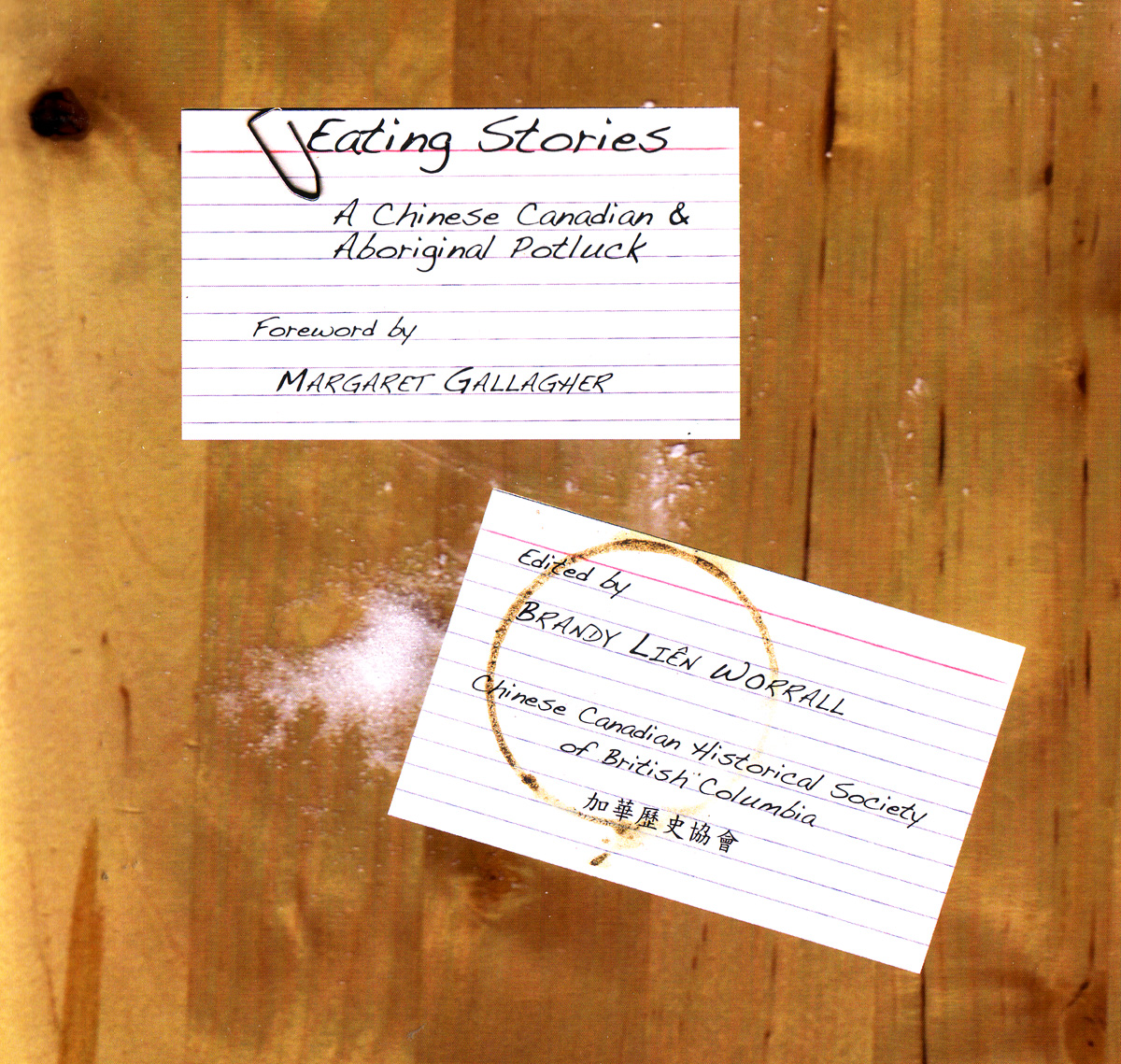|
Read 13092109 times
Connect me to:
|
Eating Storiesby: Brandy Lien, editor Worrall
Vancouver, BC Canada:
Chinese Canadian Historical Society of British Columbia 2007, Hardbound
ISBN: 978-0-9783420-2-9
Reviewed by: Jacqueline M. Newman
Fall Volume: 2008 Issue: 15(3) page(s): 24 and 25
 The twenty-nine stories, subtitled: A Chinese Canadian & Aboriginal Potluck come with thirty-seven recipes. All are fine culinary and intellectual tastings. Paraphrasing Margaret Gallagher in her Foreword, food is woven into everyday lives, fuels family histories, and feeds us all. That said, those in this book are a great look into feeding families andmaking edible and emotional food memories. The twenty-nine stories, subtitled: A Chinese Canadian & Aboriginal Potluck come with thirty-seven recipes. All are fine culinary and intellectual tastings. Paraphrasing Margaret Gallagher in her Foreword, food is woven into everyday lives, fuels family histories, and feeds us all. That said, those in this book are a great look into feeding families andmaking edible and emotional food memories.
The Chinese Canadian and the Aboriginal stories in this book are about home cooking and people's home tables. They are about family food rituals and family home recipes. Every one is the result of a writing workshop where participants were invited to recall and recreate family food enjoyment. Doing so, they bring smiles and remembrances to the readers no matter country of origin, race, or family of record. Reading this meat and potatoes cornucopia, this rice, fish, chicken, pizza, and fruit salad is, as the editor indicates in its 'For Starters,' a part of their writing process. The stories are how they ‘felt full’ and offer the reader satiation. They make every one a guest at their table, a viewer into their family, and an attentive observer of one aspect of their food life. The stories are symbolic of everyone's family and food dynamic vis-a-vis table and dining room talk. They have readers dining and drooling, seeing and savoring, hungry and satiated, and mentally collaborating and comparing stories with those of their own. Would that each of us would write down one or more of our individual food experiences. Actually, we should. These types of tales explore our own personal food history, comparable or not. We will never really know until we take pen to page. Writing them down brings to life culture and community. This book's pages all are worth savoring and sharing. All are worth keeping for future generations. Do write yours down as Imogene Lim once did in this magazine and elsewhere. Chow Mein Sandwich was her memory. You may remember reading it in Volume 6(2) on page 5. Many read about it there or elsewhere. It was the main focus of her research done in Fall River Massachusetts and elsewhere. Some have queried as to where to purchase the mix that can recreate their own childhood dinner table restaurant memories to make it. This book advises it is available as the Hoo-Mee Chow Mein Mix from the Oriental Chow Mein Company at 42 Eighth Street in Fall River MA 02720. The recipe in the book is for the Chow Mein Sandwich they probably recall. They need and now know that it is made with the company's eight ounce package of brown gravy mix called the Hoo-Mee Chow Mein Mix. They can purchase hamburger buns or square slices of white bread, some deep fried flat noodles, and sauce mix to make it, as the package indicates. Needed are equal parts chopped onion and sliced celery. Both are cooked in stock with the optional addition of pork, beef, or chicken. This mix-mixture is poured over the fried noodles that are sitting on the buns or bread or put on top, and it is served immediately.
|

 The twenty-nine stories, subtitled: A Chinese Canadian & Aboriginal Potluck come with thirty-seven recipes. All are fine culinary and intellectual tastings. Paraphrasing Margaret Gallagher in her Foreword, food is woven into everyday lives, fuels family histories, and feeds us all. That said, those in this book are a great look into feeding families andmaking edible and emotional food memories.
The twenty-nine stories, subtitled: A Chinese Canadian & Aboriginal Potluck come with thirty-seven recipes. All are fine culinary and intellectual tastings. Paraphrasing Margaret Gallagher in her Foreword, food is woven into everyday lives, fuels family histories, and feeds us all. That said, those in this book are a great look into feeding families andmaking edible and emotional food memories. 